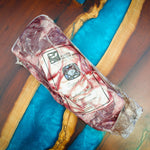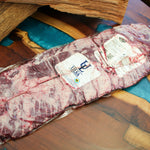
Chapter 2: Roasting Over Flames
In the annals of human history, the control and use of fire stand as a defining moment. Approximately 1 million years ago, Homo erectus, one of our early ancestors, began to harness fire—a development that would irrevocably alter the course of human evolution. This era marked the dawn of cooking, a practice that transformed not only the way humans consumed food but also their social structures and cultural practices.
The mastery of fire did not happen overnight. Archaeological evidence suggests that Homo erectus gradually learned to use fire for warmth, protection, and, crucially, for cooking. Sites such as Zhoukoudian in China, dating back hundreds of thousands of years, offer glimpses into these early experiments with fire. Though initially used for basic survival, the potential of fire as a tool for food preparation soon became apparent.
Around 400,000 years ago, evidence from sites like Qesem Cave in Israel indicates that early humans had begun to roast meat over open flames. This practice was more than a culinary experiment; it was a significant leap in human adaptation. Roasting meat made it easier to chew and digest, allowing early humans to extract more nutrition from their food. This advancement had profound implications for human health and development, aiding in the growth of larger brains and more complex societies.
As humans evolved and spread across the globe, the practice of roasting meat continued to develop. By 10,000 BCE, during the transition from the Paleolithic to the Neolithic era, roasting meat over open flames had become a staple of human communities. Sites like Göbekli Tepe in present-day Turkey, one of the oldest known temple complexes, suggest that early agricultural societies continued the tradition of communal feasting, where roasted meat played a central role.
The significance of roasting meat is further illustrated in the ancient civilizations of Mesopotamia. By 2000 BCE, beef had become a symbol of wealth and status. Cuneiform tablets from this period detail elaborate feasts where roasting large cuts of meat was a central feature. These feasts were not merely about sustenance; they were displays of power, community, and cultural identity.
The Middle Ages in Europe saw the continuation and refinement of these roasting traditions. By the 12th century, the sight of whole cattle turning slowly on spits at festivals and feasts was common. These events were more than just meals; they were communal gatherings that reinforced social bonds and celebrated collective identity.
The Renaissance period marked a democratization of beef consumption. What was once reserved for the elite began to find its way into the diets of the broader population. By the 16th century, European societies had developed a range of culinary techniques, and roasting meat became a skill that was valued across all levels of society. The crackling fires of a roasting spit, whether in a grand banquet hall or a modest home, symbolized not just culinary advancement but the mastery of humans over their environment.
Thus, the history of roasting meat over flames is a reflection of the broader journey of human civilization. From the primal fires of Homo erectus to the sophisticated roasting techniques of ancient and medieval societies, this practice has been integral to the human experience. It represents not only the evolution of our diets but also the development of our social and cultural identities. The act of roasting meat, in its simplest and most complex forms, remains a testament to the ingenuity and adaptability of the human species.




